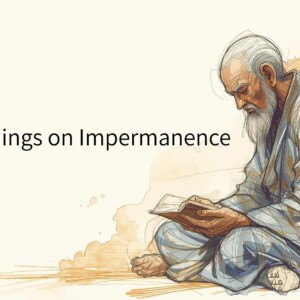
Zen and the Art of Letting Go: Finding Freedom in the Present Moment
In the practice of Zen, freedom isn’t found by clinging or controlling—it’s discovered in the simple, powerful act of letting go. Whether we’re holding on to expectations, fears, memories, or even identities, Zen gently teaches us that true peace begins where attachment ends.
This article explores Zen and the art of letting go—why it matters, what it looks like in daily life, and how ancient Zen wisdom can guide us in releasing what no longer serves us.
What Does “Letting Go” Mean in Zen?
In Zen, letting go does not mean suppressing feelings, erasing memories, or becoming indifferent. Instead, it’s about releasing mental and emotional grasping—the habitual way we cling to outcomes, opinions, and self-image.
Letting go means:
-
Accepting impermanence
-
Trusting the present moment
-
Relinquishing control over what cannot be controlled
“Let go or be dragged.” — Zen Proverb
When we let go, we make space—not for emptiness, but for freedom.
1. Letting Go of Thoughts
Zazen, or seated meditation, teaches us to observe thoughts without attachment. We don’t chase them, resist them, or follow them down rabbit holes. We simply notice and return to the breath.
This practice trains us to let go—again and again.
Try this:
When a thought arises, silently say: “Thinking.” Then gently return to the moment. No judgment. No story.
2. Letting Go of Control
One of the great teachings of Zen is surrendering to what is. Life doesn’t always go according to plan—and that’s okay. Letting go of control is not resignation; it’s opening to life as it unfolds, with calm curiosity instead of rigid resistance.
“When I let go of what I am, I become what I might be.” — Lao Tzu
Practice accepting what you cannot change. Focus your energy on how you respond.
3. Letting Go of the Past
The past cannot be changed, but it can be released. Zen invites us to stop carrying what’s already gone. In meditation, in breath, and in silence, we learn to soften our grip on memory and regret.
Letting go of the past is not forgetting—it’s forgiving and freeing.
Ask yourself: Is this memory helping or harming me right now? If it’s the latter, breathe it out.
4. Letting Go of Ego
The ego thrives on labels, comparison, and permanence. Zen points beyond ego—toward our true nature, which is vast, open, and fluid.
By letting go of the fixed idea of who we are, we become more available to the truth of what we are, moment by moment.
Practice: Bow in humility. Speak with honesty. Sit in stillness. You are not your role, your title, or your thoughts.
5. Letting Go as a Daily Practice
Letting go isn’t a one-time act. It’s a way of living. Each breath is an opportunity to release tension. Each day is a chance to loosen our grip on fear, anger, and expectation.
“The bamboo bends in the wind, but it does not break.” — Zen Saying
Be like the bamboo. Rooted in presence, flexible in spirit.
Final Thought: Letting Go Is Letting Be
Zen and the art of letting go isn’t about losing—it’s about making room. Room for peace, for presence, for what’s real. In every moment you choose to release, you return to what matters most.
So exhale. Unclench. Step into now.
The present is already enough.
🌿 Want to go deeper into Zen and mindful living?
Explore ZEN for LIFE — a gentle guide to bringing presence, simplicity, and calm into your everyday routine.
Now available on Kindle.
#ZENforLIFE #MindfulLiving #EverydayZen










この記事へのコメントはありません。